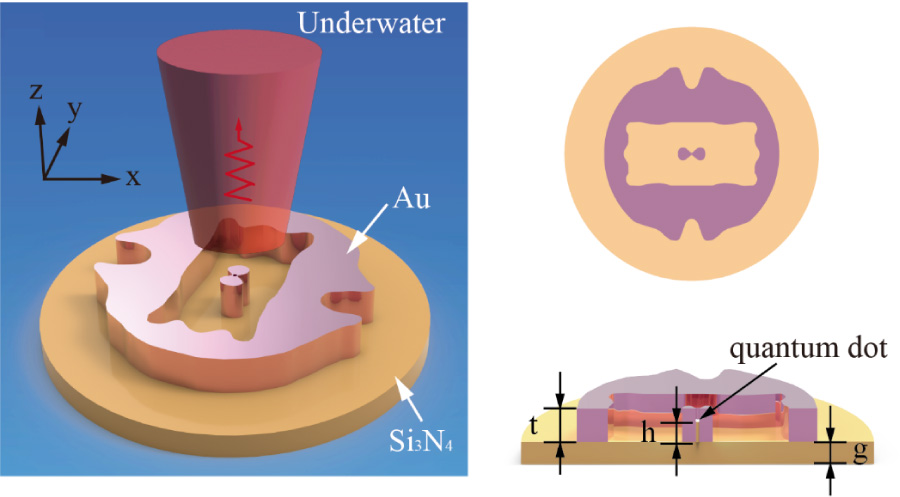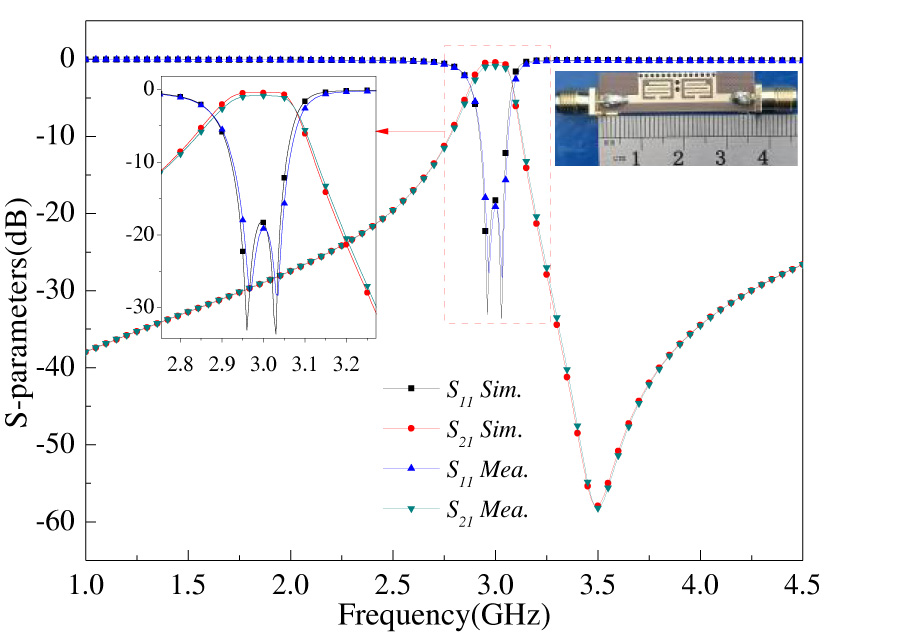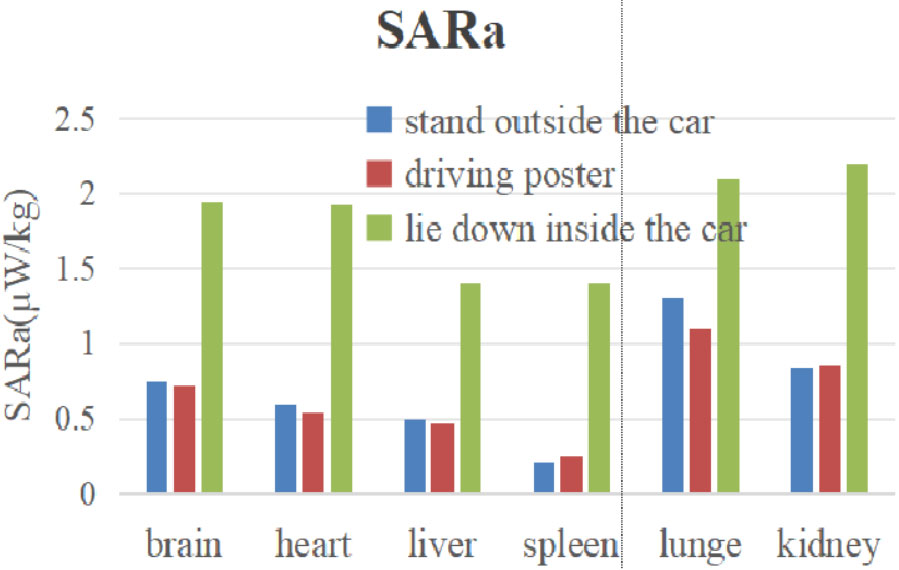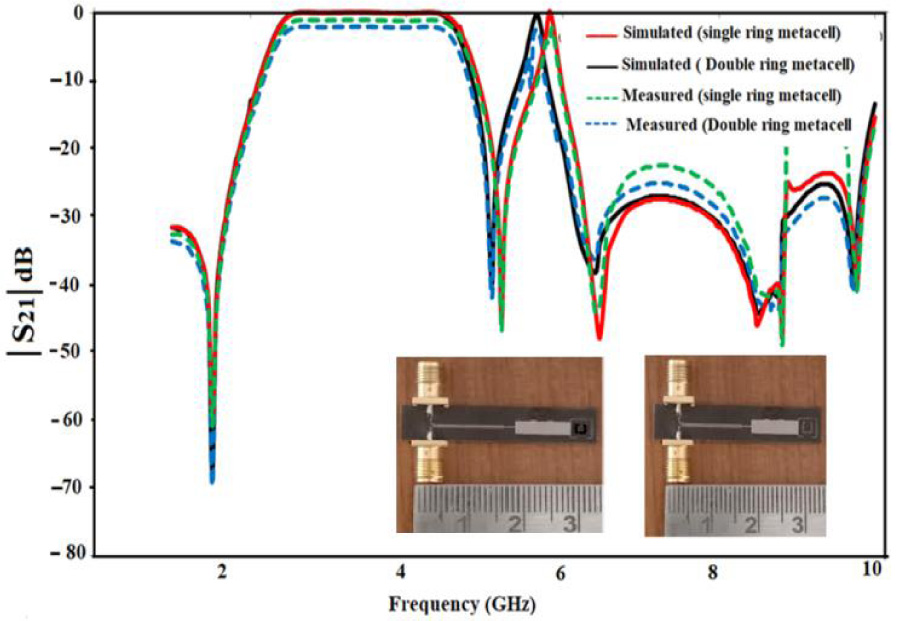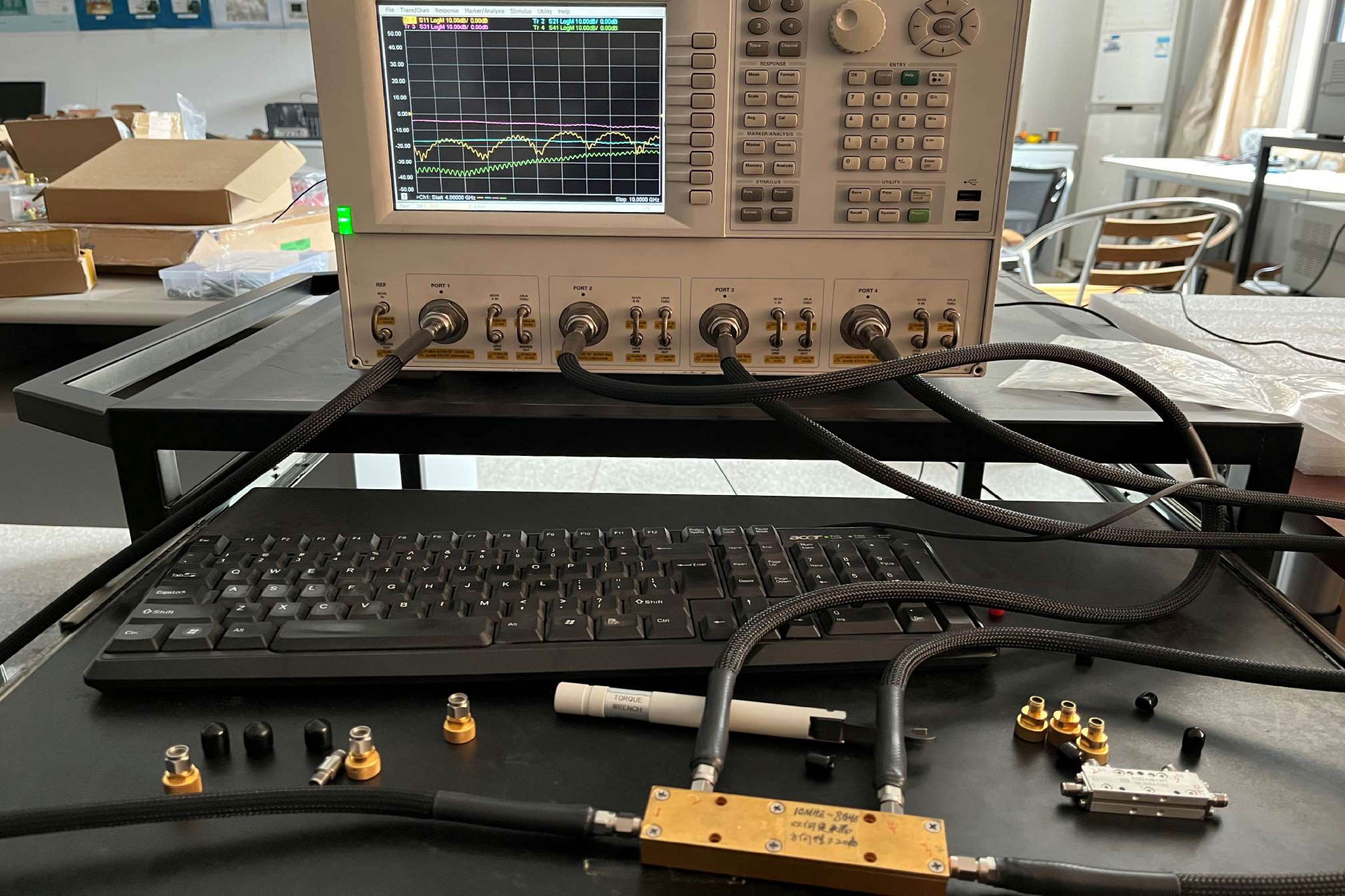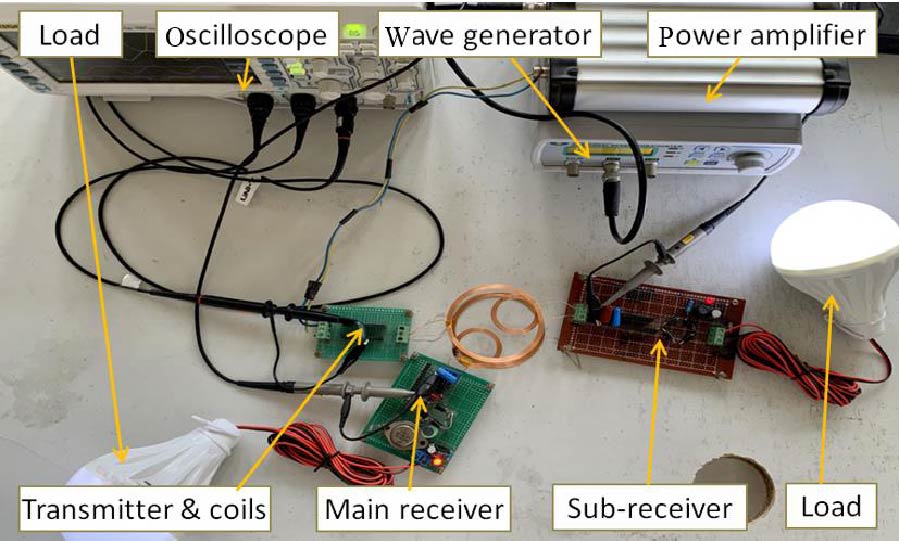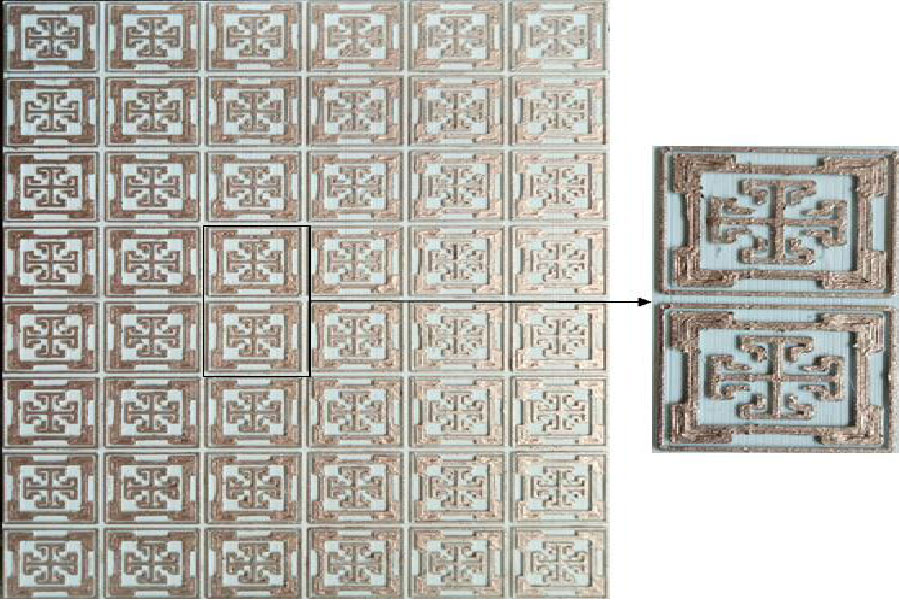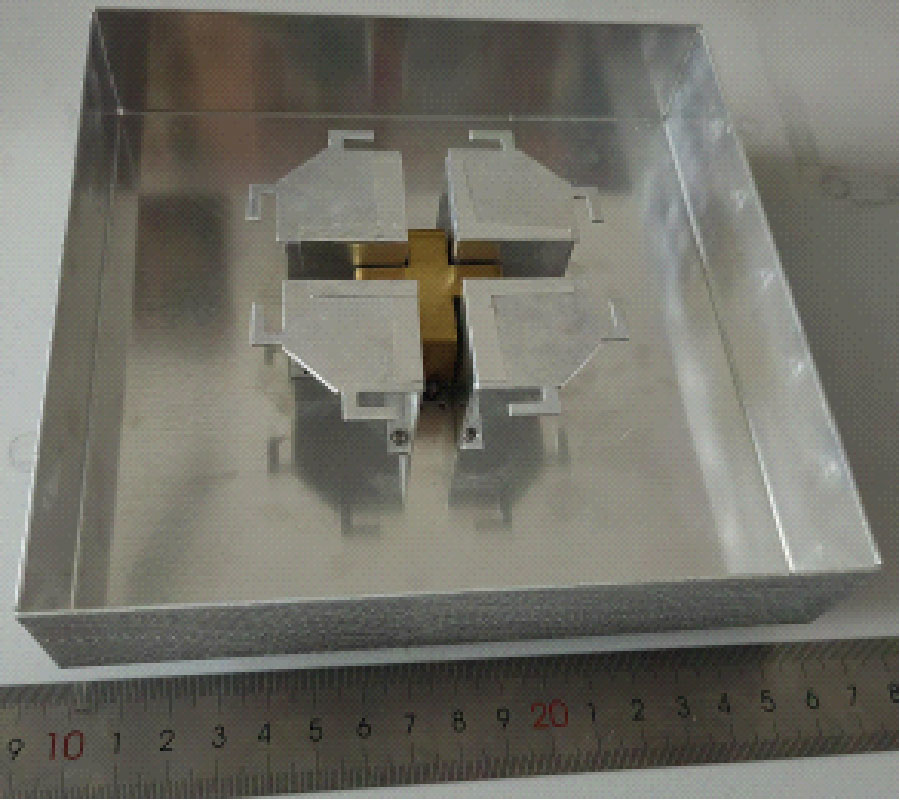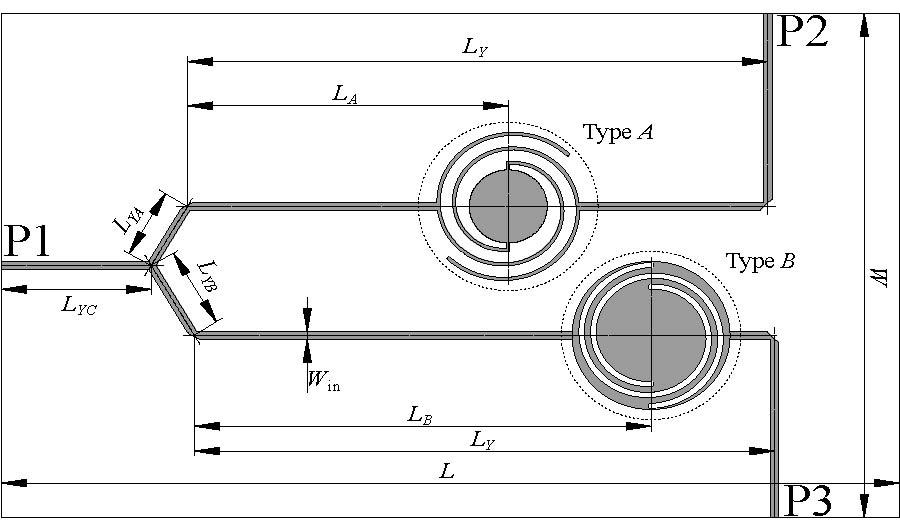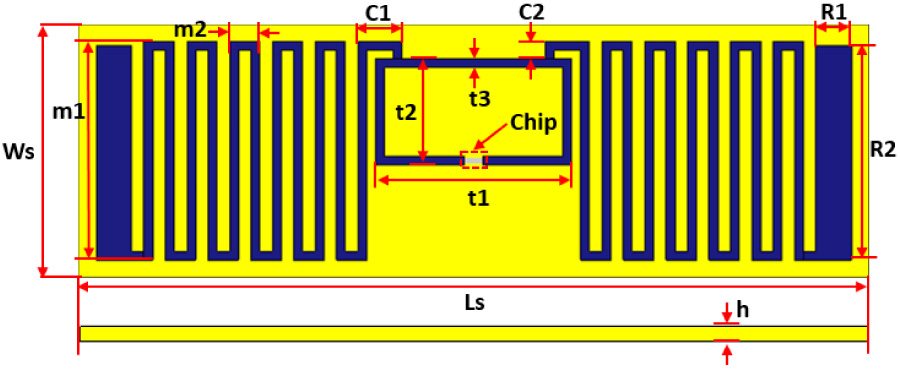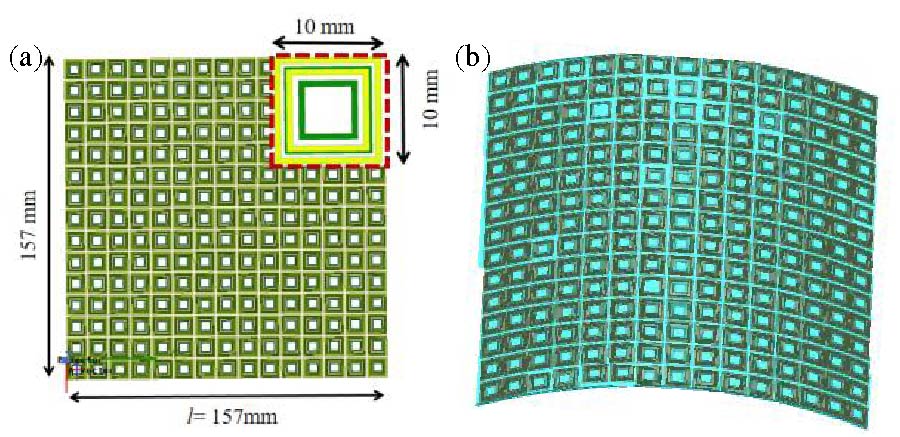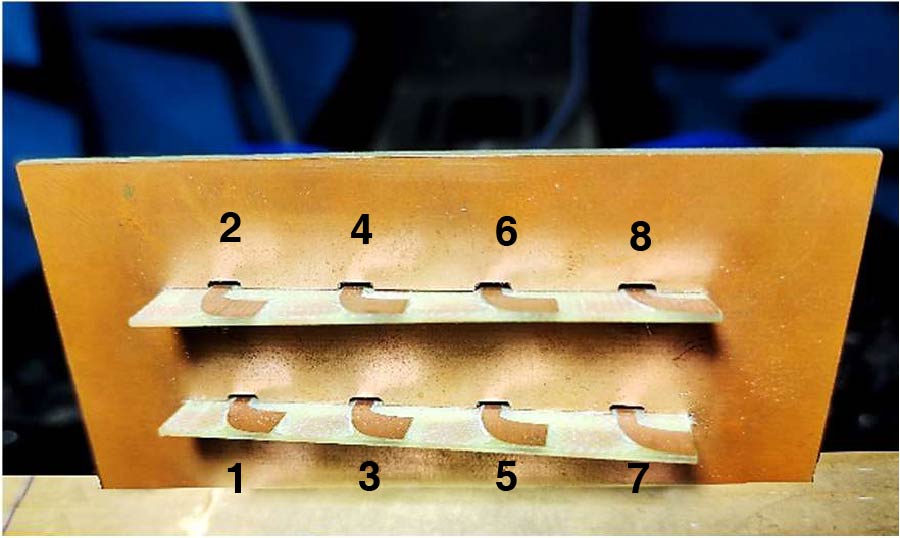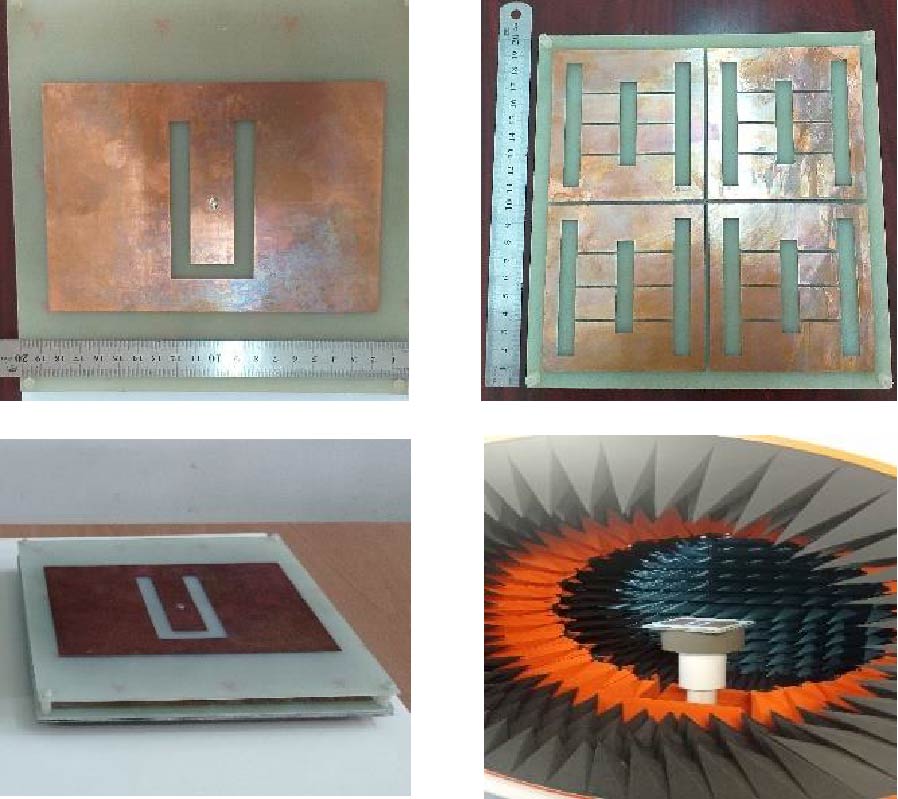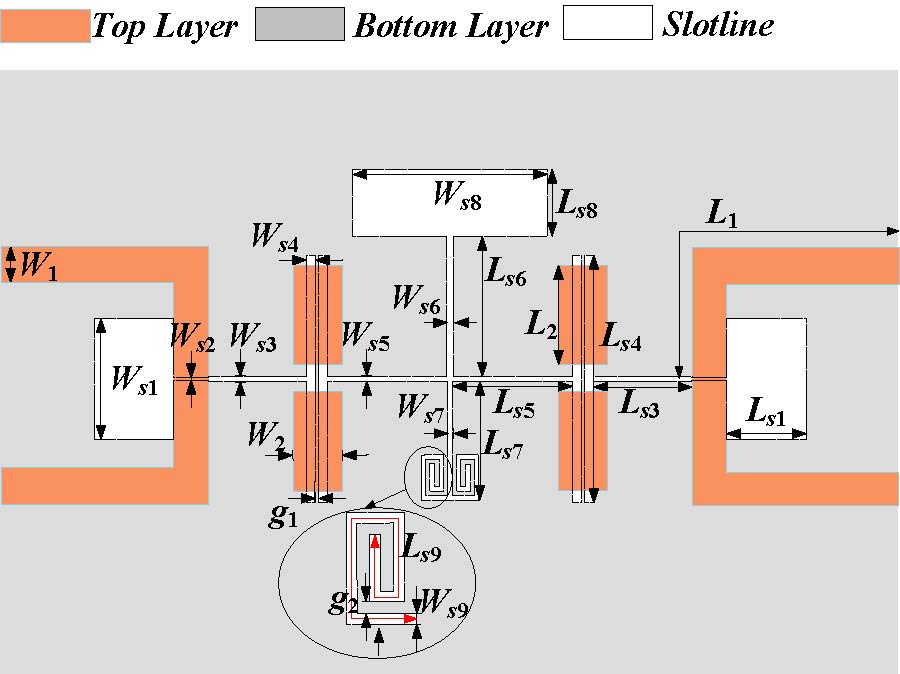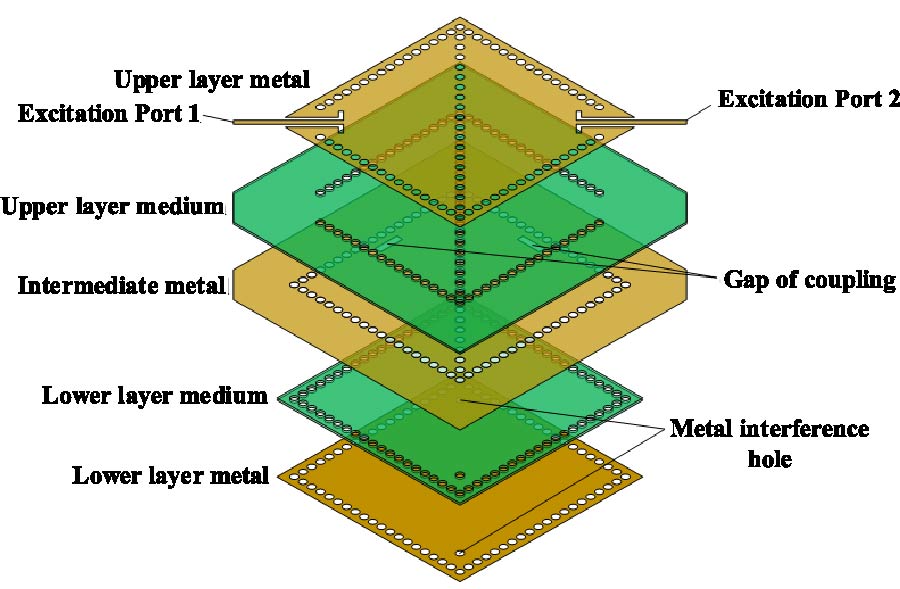A Wideband High-Isolated Dual-Polarized Magnetoelectric Dipole Antenna for 4G/5G Communications
Yanhong Xu,
Minling Wang,
Xiaochao Yang,
Can Cui,
Xuhui Fan,
Tingting Bai and
Jianqiang Hou
A highly-isolated dual-polarized magnetoelectric (ME) dipole antenna is proposed in this letter, where a modified cross-shaped differentially-feeding structure is designed to realize dual-linear polarizations (LPs). To broaden the bandwidth of the differentially-driven ME dipole antenna, a pair of L-shaped branches are loaded on the positions where a triangle is cut out of each patch to introduce a new resonant frequency at the upper frequency region. Meanwhile, a two-stepped structure is added to each of the four ports of the cross-shaped differentially-feeding structure to improve the impedance matching characteristic of the antenna. In this way, the 10 dB bandwidth is improved from 64.9% (1.54-3.02 GHz) to 83.5% (1.52-3.70 GHz), i.e., 28.7% bandwidth enhancement is achieved. A prototype is fabricated and measured. The results show that the proposed antenna can achieve a high differential port-to-port isolation of better than 38 dB, cross-polarization level (CRPL) lower than -25 dB, and peak gain up to 10.5 dBi.
